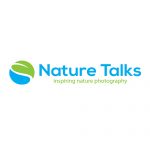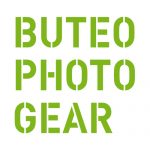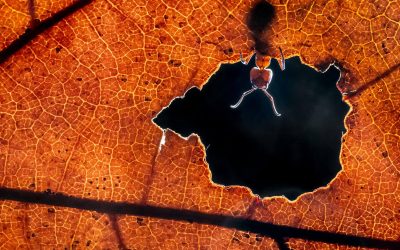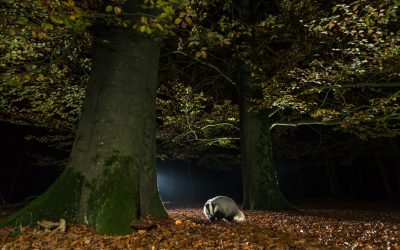Picture title: Follow the Leader © Torie Hilley | NPOTY 2023 Highly Commended | Category Mammals
Behind the Lens: Torie Hilley
…What inspires you to photograph? Are there specific themes, locations, or people that particularly intrigue you?
“Originally, I was a predator researcher in southern Africa, focusing on majestic creatures like lions, leopards, and cheetahs. It was truly an incredible experience being so close to such beautiful wildlife. During my master’s degree, I specialized in the…
Name: Torie Hilley
Age: 33
Occupation: Former African Predator Research throughout Southern Africa, turned Wildlife Photographer and Oil Painter, Business Owner, and Conservation Photojournalist
Current residence: Ventura, California, USA
Social media: Website – Facebook – Instagram

Behind the Lens: Torie Hilley
What inspires you to photograph? Are there specific themes, locations, or people that particularly intrigue you?
“Originally, I was a predator researcher in southern Africa, focusing on majestic creatures like lions, leopards, and cheetahs. It was truly an incredible experience being so close to such beautiful wildlife. During my master’s degree, I specialized in the African wild dog, also known as the African painted dog. My research centered on their behavioral ecology within a reserve in South Africa.
When I shared my plans to study African wild dogs with friends and family, they often responded with confusion, asking, “Wait, are you studying feral dogs or strays?” It always surprised me because these magnificent animals are far from ordinary stray dogs. They’re one of Africa’s most fascinating and endangered species, with complex social structures and unique behaviors.

“Mana Pools Magic” © Torie Hilley
Location: Mana Pools National Park, Zimbabwe – 2023
Description: I’ve been trying to get to Mana Pools ever since I heard of it when I first went to Zimbabwe in 2012. I have to say the wait was well worth it. I was worried that we wouldn’t see the African painted dogs after hearing that their movements were changing, but we were so fortunate to have 3 full days of wonderful encounters with them. This one morning was beautiful with golden light. I couldn’t have asked for a better encounter.
This curiosity and misunderstanding about the African wild dog sparked my career change. While I was out in the field conducting research, I always had my camera with me. It was essential for identification purposes and capturing unusual behaviors. In fact, I would often reach for my camera first before taking any data. This blend of science and photography naturally evolved, leading me to pursue photography full-time.
For a long time, I was mostly self-taught, learning through YouTube videos. However, when the pandemic hit in 2020, I began taking various courses offered by renowned photographers, including some from National Geographic. This desire to learn more drove me to surround myself with other photographers, allowing me to absorb knowledge from their experiences as well. I owe much of my growth and expertise to these interactions and educational opportunities.”

“Entourage” © Torie Hilley
Location: Mana Pools National Park, Zimbabwe – 2023
Description: One very early morning we found the painted dogs on the road, and they looked like they just woke up to start their movement. We pulled to the side and got out of the car (in Mana Pools you are allowed to be on foot) to photograph the dogs coming towards us. They didn’t disappoint. We gave them their space, but they chose to approach us. They would walk toward us and then pass us very calmly and casually. It was an incredible moment to capture the pack coming straight at me. A moment I will never forget.
How did you come to know about NPOTY and/or Nature Talks?
“It was through my photographer friends. They recommended entering a competition for a great cause and encouraged me to participate. So I thought, why not? It turned out to be a fantastic experience.”
Why did you think your submitted photo could be the contender for NPOTY? Can you tell us the story behind your submitted photo? What makes this photo special to you?
“I was pretty shocked by the whole experience. It was incredible to see three bear cubs together, which is quite rare on its own. But what made it truly remarkable was seeing them all in a line, perfectly in sync with each other. It’s something you don’t see every day, so I thought, why not capture this unique moment?
The story behind this photo takes place in Lake Clark National Park and Reserve in Alaska. Some friends and I went there. I had never seen a wild bear, especially not a brown bear, up close before. I was thrilled because Lake Clark is renowned for bear sightings. The bears are relaxed around people due to professional bear guides who ensure safety. The park also limits the number of photographers to prevent overcrowding and stress on the animals, which I fully support.

“Cloud Walker” © Torie Hilley
Location: Lake Clark National Park and Preserve, Alaska – 2022
Description: It was my first time traveling since the pandemic began, and I needed a change in scenery to boost my psyche. I knew Alaska would be perfect. Every day, I slowly trudged through the sticky mud with the professional bear guide to take photos of the bears clamming on the mudflats. I was exhausted by the last day, and bored of the grey skies that dominated the week. After testing different angles, I saw the sky gradually start to change colors. I bent down to hover my massive lens over the water to create a smooth foreground. Then the colors began to reflect upon the mudflats. I couldn’t believe what I was seeing. It looked as if the bear was walking on clouds. He was a “cloud walker” for a moment. In a matter of minutes, the colors disappeared. But my psyche was restored.
When we visited, even during peak season, there were maybe only 30 people at most, which is fantastic for such a popular destination. The controlled numbers made the experience even more special and allowed us to truly appreciate the beauty of these magnificent creatures without feeling overwhelmed by crowds.”
How did you prepare for this photoshoot? Do you have a specific workflow or checklist that you followed?
“Our small group of five or six spent five unforgettable days in July at Lake Clark National Park. We explored the expansive mud flats. As the tide receded, it revealed a feeding ground where bears foraged on the exposed mud. We captured stunning images of these powerful creatures in their natural habitat, as they foraged on the exposed mud flats.
For this shot, minimal post-processing was applied. Other than minimal adjustments to contrast, sharpening, and color enhancement, the photo’s true essence is in its authentic moment capture. I positioned myself very low, with my 400mm lens nearly skimming the water’s surface. This unique angle resulted in a breathtaking effect, beautifully blurring the background and highlighting the bears in their natural habitat. Witnessing the bears align perfectly was a truly extraordinary experience. I could hardly believe my eyes.”

“Happy Dog” © Torie Hilley
Location: Botswana – 2020
Description: While researching predators in Botswana, I drove about 3 hours to this ‘far-away’ pack on the other side of the river. I nearly gave up but then I caught their signal using radio telemetry, as one of the adults had a VHF collar. Using the antenna to pinpoint their location, I finally found them after an additional 40min. This was the face that greeted me and instantly my frustration washed away.
How would you describe your photographic style? Are there certain techniques or approaches that are characteristic of your work?
“Oh, that’s a tough question because I still consider myself in the early stages of my full-time photography career, which began around 2021. I’m continually exploring and refining my style, but I definitely have a passion for wildlife portraits. As an oil painter as well, I have a deep appreciation for color and dramatic contrasts. I love capturing the intensity of scenes, especially in black and white, like a stormy sky that adds a powerful narrative to the image. I’m constantly experimenting with different techniques and learning from friends and mentors to discover what truly resonates with me. It’s a journey of finding my unique voice through each photograph.”


“Tenderness” © Torie Hilley
Location: Masai Mara, Kenya – 2023
Description: It was my first time to the Mara, let alone Kenya, and I heard of a female leopard having a cub. Of course, we all hoped to see her, but we kept our expectations low just in case. On our second day in the Mara, we were enjoying some birdlife when our guide revved his engine. “Bahati and her cub are out – want to go?!” We didn’t have to think twice to decided and away we flew. We were one of the first vehicles in the area and she greeted us with her cub so beautifully and calmly. There was a moment of tenderness between mother and cub, but once more vehicles started to swarm the scene like bees, they started to move faster and towards cover of the bushes. They were not to be seen again for the remainder of our stay.


“Giant’s Ballet” © Torie Hilley
Location: South Africa – 2018
Description: During my time studying the African painted dog, we came across these two young bull giraffes “necking” – which is their form of sparring or fighting. However, you could tell they were practicing since it wasn’t too violent. Once I saw them bend over like this, I quickly snapped a shot to show a different side to an otherwise aggressive behavior.
What challenges do you (often) encounter while photographing and how do you deal with them?
“I always anticipate potential problems and prepare for technical issues. You never know what might happen to your camera, even though it’s a significant investment. It’s always wise to have a backup plan just in case something goes wrong. That way, if you encounter issues, especially when you’re on the go or heading back to base, you’re covered. Research has taught me that no matter what you plan for in the field, you should always expect things to go wrong. Wildlife and nature have their own agendas, and that’s part of what makes working with them so interesting.”
How important is post-processing for your work? Can you tell us about your image editing and retouching process?
“Thanks to my mentors and Tin Man Lee’s insightful videos, I’ve gained a deeper understanding of photography. These short videos have been incredibly educational. Currently, I’m enrolled in a course on conservation photojournalism, which has taught me to critically analyze each image to uncover its story.
For example, when photographing bear cubs, I focus on how they’re aligned and synchronized as they follow their mother. Such subtle details, like their formation, can tell a compelling story. My first priority is to ensure the eyes of the animal are sharp. Eyes are incredibly important because they’re often the focal point for viewers and are considered the windows to the soul.


“Nairobi King” © Torie Hilley
Location: Nairobi National Park, Kenya – 2023
Description: It was my first morning in Kenya and we visited the Nairobi National Park as a “warm up” for our photo safari. We honestly weren’t expecting much from the local park, but anything can happen. Our guide was chatting to us about what we could expect to see, when surprisingly we found this male lion right by the road. He was roaring as he was walking, looking for his pride. The sun was just starting to rise, which created this soft light and purply color on the ground. But the scars on his face indicated that he was potentially battling to be king. What a welcome to Kenya.
Next, I pay close attention to composition. It’s crucial to guide the viewer’s eye through the image. Whether I want them to focus on the entire scene or specific details depends on the story I wish to convey. For instance, unusual colors can add depth to the narrative. Enhancing these colors can make the subject stand out, while subtly darkening the background can highlight interesting behaviors or striking colors that are not commonly seen.
In essence, what I’ve learned recently is to always consider the story behind the image and what message you want the viewer to take away.
Previously, I didn’t pay much attention to certain details in the field, but now I’m definitely more proactive. For instance, I’ve learned from Federico Veronesi to carefully evaluate the background and watch for harsh shadows. If I spot any, I try to adjust my position or settings to minimize them and ensure a cleaner background. This is a continual learning process, but I’m much more attentive to these aspects now.
When photographing wildlife, I’m especially mindful of the background and composition. If I see a wild animal in front of me, I consider how to best capture the scene, including how to manage the background and the overall composition. This approach aligns with what you’re suggesting in your post-processing techniques.
In terms of editing, I primarily use Adobe Lightroom for most of my adjustments. Occasionally, I’ll bring images into Photoshop for further refinement. This combination helps me achieve the best results and bring out the details and quality in my wildlife photography.”


“Lions in Lines” © Torie Hilley
Location: Zambia – 2016
Description: As the tall grass started to die off, it became increasingly difficult to find the pride of lions I was researching, since they camouflage within the grass so well. As I was driving around looking for their tracks in the dirt, I looked up and saw the pride walking towards me on the tire tracks! I pulled over and was able to capture this shot before they decided to rest next to my vehicle.
Are there specific projects or collaborations that you are particularly proud of? What made these experiences so memorable?
“I haven’t collaborated with anyone yet because I’m just starting out. I do occasionally participate in various projects where my photos are showcased, such as at the California Academy of Sciences on special Earth Day events.”
Do you engage in photography full-time, or do you have other activities from which you derive your daily income?
“Financial stability is crucial because you need to support yourself. I’m now working full-time running my own legitimate business. I’m still working out the financial details, but I’m excited to be transitioning into conservation photojournalism. This new path involves writing articles about small conservation organizations, highlighting their important work. Who knows what the future holds – there might even be opportunities for tours or other projects down the line.
I’m shifting towards conservation photojournalism to spotlight small organizations. It’s disheartening to see how these groups, despite their crucial work on endangered species, often struggle without funding. They’re expected to accomplish so much with limited resources.


“Shy One” © Torie Hilley
Location: Masai Mara, Kenya – 2023
Description: We heard that Romi, a female leopard, was seen with her shy cub in thick bush on the far side of the park. Once we arrived, we squished in front of our vehicle in hopes to get a glimpse of the cub. Luckily, I was pointing my camera in the right direction and saw Romi grooming her cub through my lens. I started to fire off my camera while her cub stared right down my lens, with a look of uncertainty. In a matter of seconds, the cub disappeared into the bushes, never to be seen again. I counted my blessings.
I’ve seen similar challenges firsthand. Many NGOs, being nonprofits, face financial constraints, and I’ve had friends whose PhD projects fell through due to lack of grants. It’s important to clarify these realities, especially since I run a Facebook group where people often romanticize the idea of working in conservation. I make sure to show them the true conditions and challenges, which often surprises them.”
How do you stay inspired and continue to develop yourself as a photographer? Are there sources or activities that you regularly use to remain creative?
“Fellow photographers I know are a great source of inspiration for me. Additionally, as an avid hiker, spending time in nature is a fantastic way to keep my creative juices flowing.
In Patagonia, Chile, I was photographing pumas, and let me tell you, it was the most challenging photo shoot I’ve ever experienced. We were climbing steep hills, almost at a 45-degree angle, with rugged mountains in the background. I never realized how slow I could be until that moment! The cold weather added another layer of difficulty, as we had to manage our gear while dealing with the chill.


“Mountain Queen” © Torie Hilley
Location: Patagonia, Chile – 2023
Description: We scrambled up a very steep, large hill, hoping to catch Rupestre at the top of the ridge with the mountains in the background. Our lungs were burning, our legs were crying, and I barely made it to the top where our guide grabbed me and positioned me to get the fleeting shot. I barely could catch my breath, but I managed to capture the beautiful puma with the mountains behind her. I never had to work so hard for a photo in my life!
Despite these challenges, it was an incredible experience. Being on foot with the pumas, who were often just feet away, and working alongside professional guides made it a unique and cherished adventure. If you ever get the chance to photograph pumas in Patagonia, it’s an inspirational opportunity you’ll want to seize!
Last year, I entered nearly every photo competition I could find. It’s fascinating how an image that wins one competition might go unnoticed in another. You really never know how things will turn out. However, if a photo doesn’t win, it’s okay. What matters most is that photography makes you happy. Keep doing it for the joy it brings you—it’s a great source of motivation.”
What equipment do you enjoy using and why? Do you have a preference for certain lenses, cameras, or accessories?
“My 400mm f/2.8 lens is probably my favorite. It was a significant investment, but absolutely worth it. It has allowed me to capture some truly incredible shots, especially when you know how to use it effectively. Some people think that a high-end camera does all the work, but it’s really about the skill behind the lens. The 70-200mm lens I also use is versatile, offering both wide-angle and zoom capabilities, which is great for various shooting scenarios.



“Happy Dog” © Torie Hilley
Location: Botswana – 2020
Description: While researching predators in Botswana, I drove about 3 hours to this ‘far-away’ pack on the other side of the river. I nearly gave up but then I caught their signal using radio telemetry, as one of the adults had a VHF collar. Using the antenna to pinpoint their location, I finally found them after an additional 40min. This was the face that greeted me and instantly my frustration washed away.
Besides wildlife and landscape photography, I’m also passionate about astrophotography. While I’m still developing my skills, I’m increasingly focusing on integrating wildlife into landscape photography. It’s important to showcase animals within their habitats, not just up close. Adding context to their environment helps tell a more complete story, and I’m enjoying working on this aspect of my photography.”
If you could give one tip to another photographer, what would that tip be?
“Definitely don’t give up! Last year, I entered nearly every photo competition I could find. It’s fascinating how an image that wins one competition might go unnoticed in another. You really never know how things will turn out. However, if a photo doesn’t win, it’s okay. What matters most is that photography makes you happy. Keep doing it for the joy it brings you – it’s a great source of motivation.”












